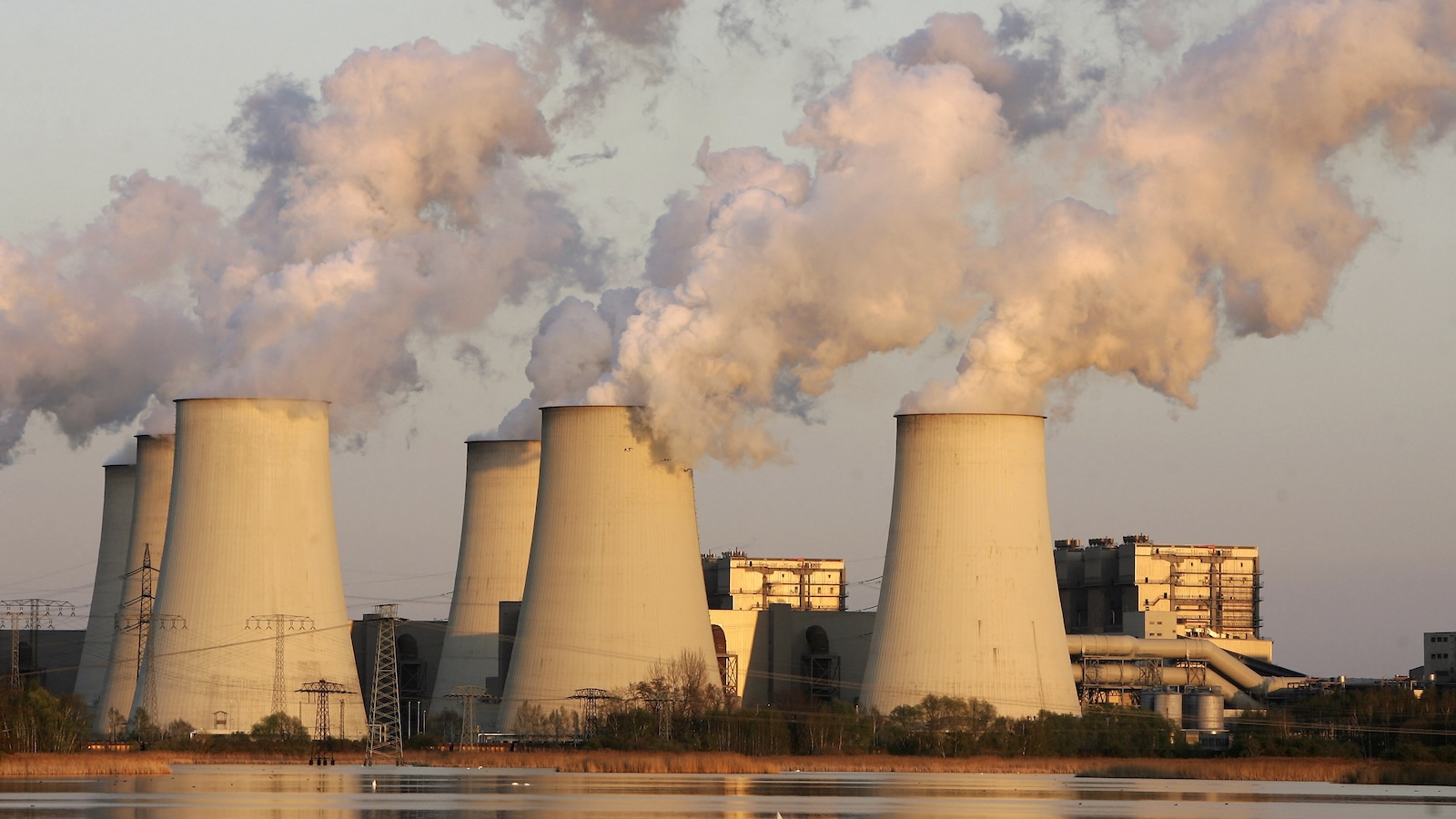Despite minor improvements, major companies’ climate commitments remain “critically insufficient” to limit global warming to 1.5 degrees Celsius (2.7 degrees Fahrenheit), according to a new analysis.
The 2024 Corporate Climate Responsibility Monitor, a report by the European nonprofits Carbon Market Watch and NewClimate Institute, finds that many of the world’s biggest companies are making better climate pledges — for example, by beginning to move away from misleading “carbon neutrality” claims and setting quantitative emissions reduction targets alongside their net-zero pledges.
But huge problems remain. The report finds that 51 major companies’ climate plans would, collectively, only reduce emissions about 30 percent below 2019 values by 2030 — far short of the 43 to 48 percent that scientists say the world must achieve to limit global warming to 1.5 degrees C. Most companies’ targets continue to be “ambiguous,” the report says, leaving out critical supply chain emissions and banking on questionable carbon offsets.
“We’re seeing improvements from a very low baseline,” said Gilles Dufrasne, lead on global carbon markets for Carbon Market Watch and a co-author of the report. “There’s still quite a big gap between what they’re pledging to deliver and what they’re actually delivering.”
The companies analyzed span four sectors — automobiles, fashion, electric utilities, and food and agriculture — and account for about 16 percent of the world’s overall greenhouse gas emissions. Carbon Market Watch and the NewClimate Institute selected them because they have been some of the most vocal about their climate efforts.
Thirty-one of the companies were included in previous versions of the Corporate Climate Responsibility Monitor, or CCRM. The first report, published in 2022, found that 25 companies’ “net-zero” targets would only reduce aggregate emissions by 40 percent. The report’s 2023 iteration raised similar concerns, describing two dozen companies’ climate commitments as “misleading” and “wholly insufficient.”
This year’s report takes another look at those same companies’ net-zero targets and brings in 20 new ones, but its main focus is on their medium-term goals — stepping stones on the path to decarbonization by 2050. Bodies like the United Nations High Level Expert Group and the International Organization for Standardization have recommended interim targets so that companies (and governments) don’t wait until the last minute to cut their emissions.
Although the analysis finds improvements in 19 of the companies’ interim targets over the past two years, many of them still feature the same flaws as the net-zero ones. Crucially, they tend to gloss over emissions associated with the transportation and production of materials that companies buy and the products they sell to consumers. These so-called “scope 3” emissions represent more than 90 percent of the companies’ collective climate footprint. However, firms including the automaker Toyota, the commercial truck manufacturer Daimler Truck, and the British supermarket chain Tesco have reported no plans or only limited efforts to address them.

Fabrice Coffrini / AFP via Getty Images
Other companies’ pledges lean too heavily on land-based carbon credits and carbon removal projects, initiatives that attempt to neutralize greenhouse gas emissions by avoiding them elsewhere — like by protecting forests that might otherwise have been chopped down — or by planting trees to suck carbon out of the air. Such projects have a well-documented history of accounting problems, and the carbon they remove is often vulnerable to getting reemitted in the event of wildfires. Experts say carbon removal should only be used to offset the small sliver of global emissions from hard-to-decarbonize activities, but the NewClimate Institute and Carbon Market Watch say companies are using credits and removal as alternatives to emissions reductions.
According to the report, just eight of the companies have 2030 emissions reduction targets that are of “high or reasonable integrity.” Only four of those firms — the food companies Danone and Mars, the Spanish electric utility Iberdrola, and the automaker Volvo Group — back their targets with concrete plans to actually achieve them. Other companies, like the mega-retailer Walmart, have not updated their 2030 targets for several years. The car company Volkswagen dropped its interim target for 2025 three years ago and has not announced a replacement.
John Reilly, a senior lecturer at MIT’s Sloan School of Management, said the report shows how companies are perhaps too eager to align with science-based emissions reduction goals such as “net-zero by 2050.” They agree to such goals “without much thought about how they would actually achieve them,” he said, adding that weaker but better substantiated emissions targets might be preferable. “If these companies had very concrete, detailed plans to get to even a 20 percent reduction by 2030, I’d feel a lot more comfortable than vague commitments to get to 43 or 48 percent.”
According to Silke Mooldijk, a researcher with the NewClimate Institute and a co-author of the report, the problem is not a lack of clarity around what companies need to do to decarbonize. “It’s very clear what measures they need to take,” she told reporters last week, naming basic steps like setting a phaseout date for coal- and oil-fired electricity generation and the sale of gasoline-powered cars. Rather, companies seem to be resisting radical transformations in favor of small steps and “creative accounting” that allow them to continue business as usual.
For example, the report commends the clothing companies H&M and Inditex — which owns Zara — for setting transparent emissions reduction goals that are of “moderate” integrity, but criticizes them for failing to envision an alternative to the highly polluting fast-fashion business model. For food and agriculture, the report notes efforts from Nestlé to transition toward renewable energy but says the company isn’t doing enough to replace animal products with plant-based alternatives. Plans from other firms like Kepco, an electric utility, appear to use carbon capture to mitigate ongoing climate pollution, potentially justifying a delay in the transition to renewable power generation.
Of the 20 companies named in the report that Grist contacted for comment, six responded in time for publication. Nestlé said it disagreed with the report; a spokesperson said the company is pursuing carbon dioxide removal as a complement to reducing its absolute emissions, a strategy that is based on recommendations from the Intergovernmental Panel on Climate Change. A Mars spokesperson objected to the report as well, saying that the company’s net-zero target does not rely on controversial land-based carbon removal. (Carbon Market Watch and the NewClimate Institute had said it was “unclear” whether this was the case.)
Daimler Truck, the footwear giant Adidas, and H&M outlined their existing climate plans and emissions disclosures, and the latter two highlighted new data for 2023 that was not included in the report. In 2023, Adidas said it reduced greenhouse gas emissions by 24 percent from a 2019 baseline. H&M said it reduced scope 3 emissions by 22 percent.
Five of the companies expressed an ongoing commitment to emissions reductions and highlighted their alignment with the Science-Based Targets initiative, or SBTi, a nonprofit that validates more than 4,000 private-sector climate targets. Indeed, many of the companies’ near-term climate targets fit SBTi-approved pathways to limit global warming to at least 2 degrees C (3.6 degrees F), even when the CCRM graded them as “poor” or “very poor.”
Dufrasne acknowledged this discrepancy and said there’s an urgent need for less flexibility across ratings programs and stronger standards overall. “I think it’s quite telling that companies don’t actually engage in the substance of the issues that are being flagged in the report and just say, ‘It’s fine, we’re being certified by SBTi,’” he told Grist.

Viewpress / Getty Images
Dufrasne said he’s concerned that SBTi and similar organizations may actually be loosening their standards. Just last week, the SBTi’s board of trustees announced that they would begin allowing companies to use carbon credits toward their annual scope 3 emissions targets, a move critics say could undermine actual emissions reductions. Similarly, the Voluntary Carbon Markets Integrity Initiative, or VCMI — a body that sets guidance on the use of carbon credits — released a proposal last November that would allow companies to use carbon credits for up to 50 percent of their annual scope 3 emissions every year until 2035.
The VCMI says this approach would help companies “bridge the gap” between their advertised scope 3 emissions reduction targets and the reductions they actually achieve. But Carbon Market Watch and the NewClimate Institute’s modeling suggests it could “nullify” companies’ scope 3 climate targets, allowing them to keep emissions steady or even increase them as long as they buy enough credits.
The VCMI did not respond to Grist’s request for comment. An SBTi spokesperson did not address specific parts of the report but said that the organization “urge[s] all interested parties to contribute to the development of our standards through the public consultations.”
Jonathan Overpeck, dean of the University of Michigan’s School for the Environment and Sustainability, said the report suggests a failure of the voluntary approach to corporate climate action. Companies must now be “more proactive in figuring out a better approach,” or risk blowback from consumers and regulators.
“I like the idea of corporations … playing a role in more stringent decarbonization pathways,” Overpeck added, “but if they can’t do it then it will have to be imposed on them.”
Benja Faecks, an expert on global carbon markets for Carbon Market Watch and a co-author of the report, offered some specific ways governments could intervene: by setting binding, sector-specific emissions reduction targets; expanding carbon pricing and cap-and-trade systems to help drive down corporate emissions; and further restricting misleading advertising about companies’ climate pledges, especially around “carbon neutrality.” Earlier this year, the European Union banned companies from labeling products as carbon neutral by 2026, but companies are still allowed to describe themselves that way.
“It doesn’t make sense for Nestlé to be able to say they’re carbon neutral when they’re not allowed to say they sell carbon neutral espresso machines,” Faecks told reporters last week.


